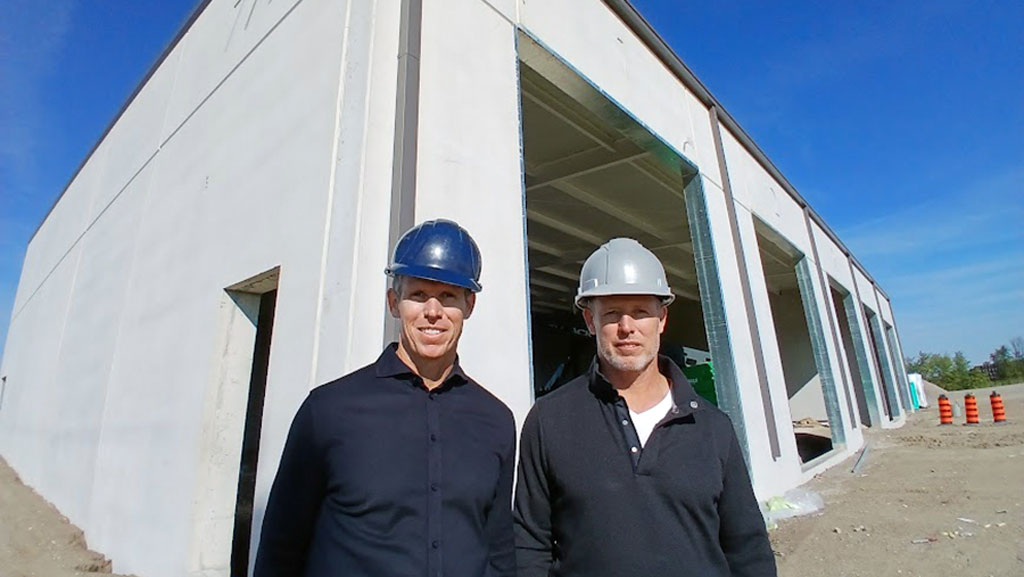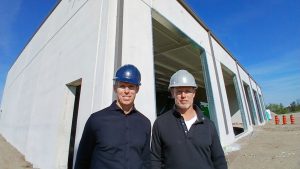The Windsor, Ont. area’s largest concrete firm is building its newest plant, employing Italian technology to pre-mix cement, rather than providing dry mix and having trucks mix it the more conventional way.
Lakeshore Concrete owners’ brothers John and Joe Vanderwerf say this will make for more efficiency and cut down on carbon emissions, since mixing onsite will be powered by electric motors rather than having trucks doing the work and running diesel engines longer.
As well, the expansion means the company will be able to provide more uniform service to the Windsor-Essex market, which has been outpacing the nation in economic growth at 1.4 per cent this year and expected 2.9 per cent between 2025 and 2028. That’s compared to 23 of the 24 top metro areas as forecast by the Conference Board of Canada.
Despite rising population driven by cheaper real estate and growth in the automotive sector, two blockbuster projects have had wide local ramifications — the Gordie Howe International Bridge, due to be completed next year, and the NextStar Energy battery plant, a joint venture between LG and Stellantis building electric car batteries.
Lakeshore has already won a share of that business, supplying more than five million square feet of slabs and most of the foundations for the NextStar site.
“All said and done I would estimate you had 10,000 truckloads of concrete going to that site alone,” John Vanderwerf said.
The company has three divisions, Lakeshore Concrete Supply, Jay Dee Concrete Forming and Lake Erie Concrete Supply. While the other sites are located close to markets, its new multimillion-dollar batch plant is being built in Amherstburg in the county’s southwest corner.
“It makes for a nice triangle so that there isn’t anywhere within Essex County that we can’t service,” he said.
Construction began this summer on the maintenance and power building. Parts for the batch plant are still being delivered from MCT (Marcantonini Concrete Technology) in Bettona, Italy.
Why MCT?
“They just do some things that really appeal to us in terms of their set up, the kind of materials they use, the pre-planning,” Vanderwerf said.
Physically MCT is manufacturing the tower structure including silos and conveyors. The $800,000 mixer, still wrapped, has already arrived.
Jay Dee Concrete is the contractor and is doing the site work on the six-acre rural property.
Besides the plant, the maintenance building construction is also interesting. It’s being built using tilt-up construction, handled by Tiltwall of Woodstock, Ont.
Casting slabs are poured and panels formed on the ground. They’re in three layers — a first pour of four inches, three-inch rigid insulation boards, a steel grid and interior layer for a 13-inch-thick wall. The assembly, 25 feet in height, is tilted up and lifted into place.
While reinforcing steel is used in the panels the building does not use structural steel to hold together. However, a steel structure with insulated panels supports the roof. The slabs are then held together by metal pins in the footings and by the roof beams welded to plates.
“So very very efficient,” Vanderwerf said. “That’s a complete thermal break, right down to the footings, enclosed all the way up to the roof and then the roof itself.”
This technology is widely used but not seen much in Canada.
“I think it’s much more prevalent in the United States,” he said. “Big distribution warehouses — Amazon — will use this.”
Another saving is the panels don’t have to be transported from where they’re precast, which can limit size.
Otherwise, besides doors and windows, the building is complete with the exception of flourishes like composite metal corners.
One goal is to reduce greenhouse emissions.
Typically, cement companies have dry mix plants that measure and disperse concrete, stone, water and sand into a truck.
“And then that mixer has got to sit there and mix it,” Vanderwerf said.
A truck needs to mix for 80 revolutions. The truck could be running 15 minutes, with carbon-emitting diesel engines on, before leaving the yard.
The mixing onsite takes less time.
“That truckload of concrete will be mixed in less than two minutes,” Vanderwerf says. The truck then simply becomes an agitator where it keeps turning the mix over until the pour.
“You’re going to have better mixed concrete, more constant concrete from one load to the next, less carbon intensive.”
But, Vanderwerf added, pre-mixing won’t work for every firm.
“Most people wouldn’t make the investment,” he said. “You need a business that’s going to continually turn trucks over.”




Recent Comments